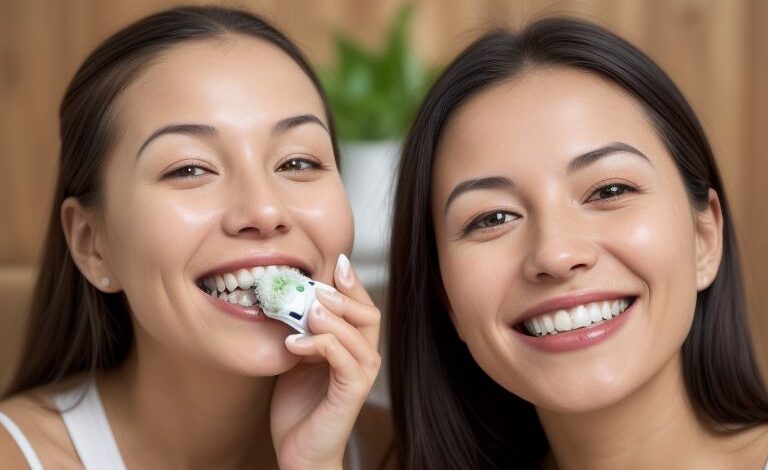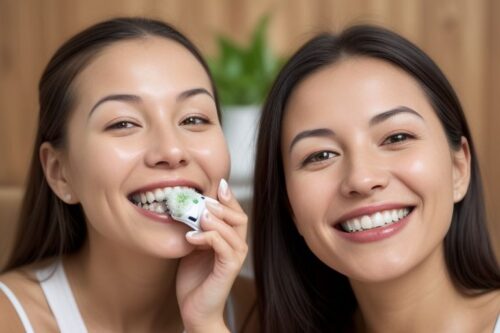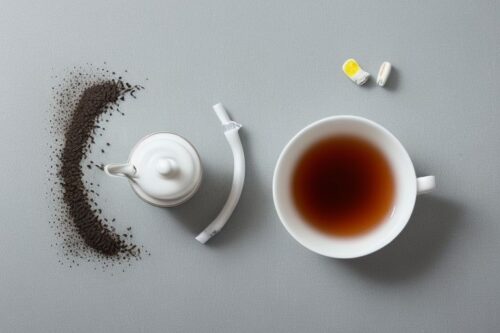
5 Effective Ways to Prevent Tea Stains on Teeth
Tea is a beloved beverage for millions, offering a cozy, calming ritual and various health benefits. However, one downside of drinking tea regularly is the risk of staining your teeth. The tannins in tea—especially black tea—are notorious for leaving yellow or brown stains that can dull your bright smile. But don't worry! You don’t have to give up your daily cup to maintain white teeth.
In this article, we’ll explore how to prevent tea stains on teeth with practical tips and solutions that keep both your smile and tea-drinking habit intact.

Why Does Tea Stain Teeth?
Before we dive into prevention tips, it's essential to understand why tea causes stains in the first place. The culprit behind tea stains is tannins—a type of polyphenol found in many plant-based foods, including tea. Tannins have strong staining properties, and they can cling to your tooth enamel, causing discoloration over time.
Black tea tends to have the highest levels of tannins, while green and white teas have lower amounts. But even herbal teas can contribute to staining if consumed frequently. Add the fact that tooth enamel can naturally erode over time, and your teeth become even more prone to picking up those dark stains.
1. Drink Through a Straw
One of the easiest ways to prevent tea from staining your teeth is to limit its contact with your enamel. Drinking tea through a straw is an effective solution. By sipping through a straw, the liquid bypasses your teeth, reducing the risk of stains.
- Bonus Tip: This method works for both hot and iced tea, so you can enjoy your drink while protecting your teeth.
2. Rinse Your Mouth with Water After Drinking Tea
A simple yet effective way to prevent stains is to rinse your mouth with water after drinking tea. This helps wash away tannins before they have the chance to stick to your enamel.
- How to Do It: Swish water around in your mouth for 20-30 seconds after finishing your tea. Doing this consistently can significantly reduce staining over time.
- Extra Tip: If you don’t have water handy, chewing sugarless gum can also help stimulate saliva production, which naturally cleanses your teeth.
3. Brush and Floss Regularly
Regular brushing and flossing are your first line of defense against tea stains. While this may seem like common sense, it’s especially important for tea drinkers to maintain a consistent oral hygiene routine.
- Brush After Tea: Wait about 30 minutes after drinking tea before brushing your teeth. This allows your enamel to re-harden after exposure to the acidic compounds in tea.
- Floss Daily: Flossing helps remove tea residue from between your teeth, where stains are more likely to develop.
- Use Whitening Toothpaste: A good whitening toothpaste can help polish away surface stains and prevent new ones from forming. Look for toothpastes that contain mild abrasives like baking soda or activated charcoal, which are gentle on enamel but effective at removing stains.
4. Add Milk to Your Tea
If you’re a fan of black tea, consider adding a splash of milk. The casein in milk binds to tannins, reducing their ability to cling to your teeth and cause stains. This is especially helpful if you prefer stronger teas like black or oolong, which contain higher levels of tannins.
- Pro Tip: Dairy-free alternatives like almond or soy milk don’t have the same effect, so stick to cow’s milk if you’re trying to prevent stains.
5. Use a Stain-Preventing Mouthwash
Another effective way to fight off tea stains is by using a mouthwash specifically designed to prevent stains. These mouthwashes contain ingredients like hydrogen peroxide or whitening agents that help break down stains before they can settle on your teeth.
- When to Use: Swish the mouthwash around for 30 seconds before or after your tea to create a barrier that protects your enamel from staining.

How to Deal with Existing Tea Stains
If you’ve already noticed some discoloration on your teeth from tea, don’t panic! There are a few ways to reduce and even reverse tea stains:
Professional Whitening
One of the most effective solutions for removing tea stains is professional whitening treatment from your dentist. In-office treatments use stronger whitening agents than over-the-counter products, delivering faster and more noticeable results.
At-Home Whitening Kits
If you prefer an at-home option, there are plenty of teeth whitening kits available that can help reduce tea stains. Many of these kits contain peroxide-based gels that break down stains over a series of treatments. Look for kits that are ADA-approved for safety and effectiveness.
Baking Soda and Hydrogen Peroxide Paste
For a more natural remedy, you can make a DIY whitening paste using baking soda and hydrogen peroxide. Baking soda is a mild abrasive that can scrub away surface stains, while hydrogen peroxide helps bleach teeth.
- How to Make It: Mix a small amount of baking soda with hydrogen peroxide to create a paste. Apply it to your teeth with a toothbrush and let it sit for a few minutes before rinsing. Be sure to limit this treatment to once or twice a week to avoid damaging your enamel.
Final Thoughts: Enjoy Your Tea and Your White Smile
Drinking tea doesn't mean you have to live with stained teeth. By incorporating a few of these simple habits into your routine—like using a straw, brushing after tea, and adding milk—you can continue enjoying your favorite beverage without sacrificing your smile.
Tea lovers, rejoice! You can sip on your morning cup of tea and still keep your teeth looking bright and white.

